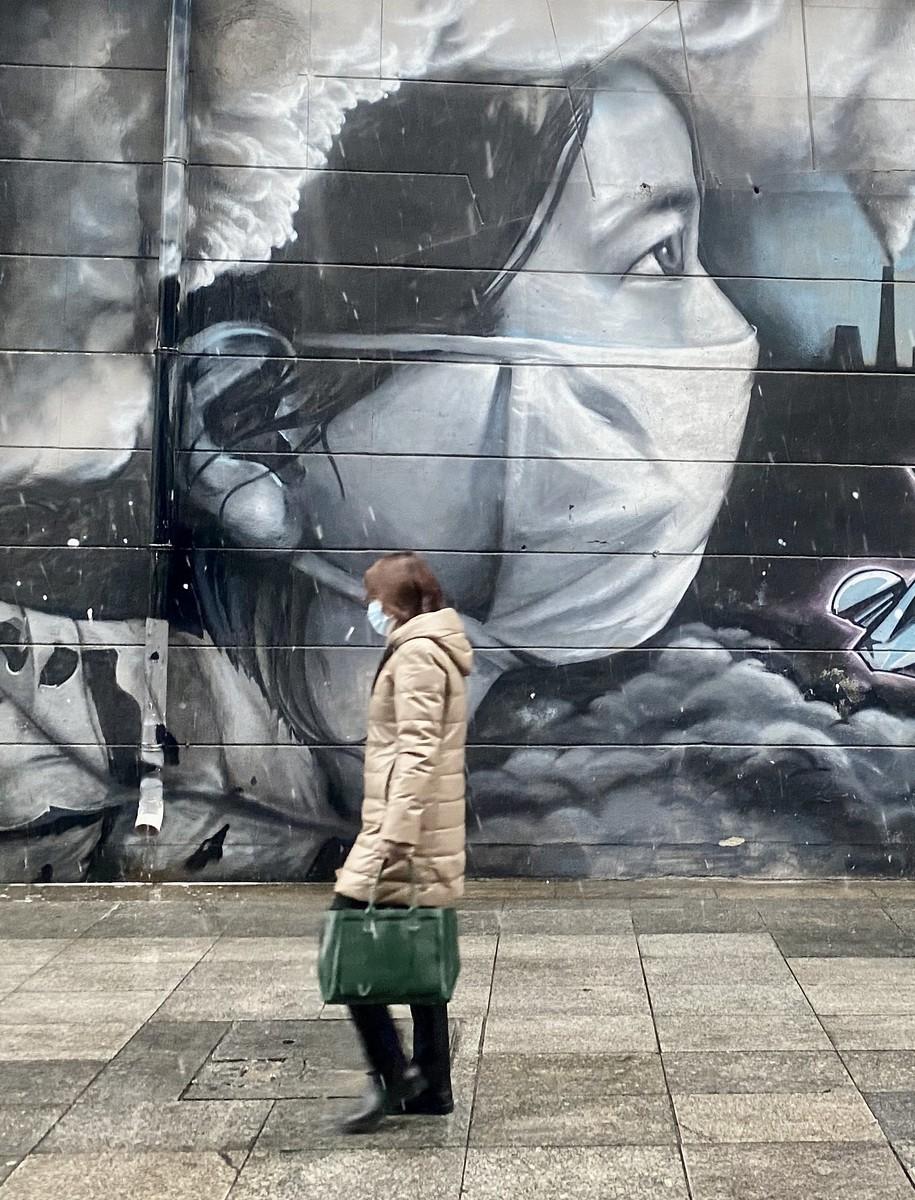China today reported 1,886 new COVID-19 cases, as Japanese health officials reported that 88 more people on the quarantined Diamond Princess cruise ship tested positive for the novel coronavirus.
Meanwhile, South Korea recently detected two illnesses in people with no links to earlier cases, a sign that transmission may be expanding there.
And research news includes evidence of person-to-person spread before symptoms were evident and data demonstrating that screening incoming evacuees in Germany was ineffective.
Hospital director among new deaths
In China, the 1,886 new cases today are down from 2,048 reported yesterday, and they raise the overall outbreak total to 72,436 cases, according to the daily update from the National Health Commission. The country also reported 1,097 new serious cases and 98 more deaths, raising those respective totals to 11,741 and 1,868.
Also in China today, state media reported that a hospital director in Wuhan has died from his COVID-19 infection, Agence France-Presse (AFP) reported.
Liu Zhiming, MD, 51, director of Wuchang Hospital, died this morning despite intensive medical efforts. Health workers have told AFP that there are shortages of personal protective equipment and that some continue to work despite having respiratory symptoms.
Yesterday, a large epidemiologic investigation from China revealed that at least 1,716 healthcare workers have been infected in the outbreak, 5 of them fatally.
CDC bars entry for Diamond Princess passengers
Japan's health ministry today reported that 88 more people from the Diamond Princess tested positive for COVID-19, raising the total to 542. Of the most recently confirmed cases, 65 people are asymptomatic.
The ship has been quarantined in Yokohama port since Feb 3.
The US Centers for Disease Control and Prevention (CDC) said today in a media statement that passengers and crew on the Diamond Princess are restricted from entering the United States for at least 14 days after they leave the ship, because of the ongoing risk.
The CDC cited the rate of new infections, including in those without symptoms. The travel ban includes 100 Americans who are still on the ship or in hotels in Japan. It commended Japan's actions, but said they might not have been enough to prevent transmission among people on the ship.
Meanwhile, 300 more passengers from the Westerdam cruise ship have been cleared to fly to Dubai from Cambodia, which allowed it to dock after four other countries turned it away, Reuters reported today. So far, 255 guests and 747 crew are still on the boat, and testing is under way in that group.
So far the only passenger identified as having the virus is an American woman who tested positive after she disembarked and traveled to Malaysia.
South Korea probes transmission routes
South Korea's Centers for Disease Control and Prevention (KCDC) today warned that the country is entering a new phase of the outbreak, based on the confirmation of some recent cases that weren't linked to known transmission chains, Yonhap News reported.
At a media briefing, KCDC Director Jung Eun-kyeong, MD, PhD, said South Korea now has 31 cases and that infection routes for the last 3 are uncertain, and she warned that there's a chance that more similar cases will be found.
South Korean Health Minister Park Neung-hoo, PhD, said there seemed to be a lull in new confirmed cases last week, which may mark a transition to a second peak stage, according to the report.
Of the 31 cases in South Korea, 12 involved Wuhan visitors and 5 patients visited Singapore, Thailand, or Japan. The other 14 presumably involve human-to-human transmission, health officials said.
Elsewhere, Singapore—where officials have also reported a few unlinked cases—today reported 4 more cases, 3 linked to a known church cluster and 1 a contact of an earlier case. Singapore has now reported 81 cases, the most of any country outside China, except for the Diamond Princess cluster in Japan.
The World Health Organization (WHO) said today in its latest daily situation report that it received reports of 10 more cases outside of China over the past 24 hours raising the total to 804 in 25 countries. However, 454 of those are related to the Diamond Princess cruise ship.
At a media briefing today, WHO Director-General Tedros Adhanom Ghebreyesus, PhD, said 92 cases in 12 countries outside of China are due to human-to-human transmission, and so far there aren't enough data on illnesses outside of China to make meaningful comparison with cases inside China regarding disease severity or case-fatality rate.
He said the WHO is following up with countries to get more information. "However, we have not yet seen the sustained local transmission, except in specific circumstances like the Diamond Princess cruise ship."
Autopsy results, spread during incubation, screening failure
In the latest medical literature developments:
- Person-to-person transmission during the incubation period likely occurred in a four-person family cluster, a team reported today in the Journal of Infectious Diseases. The investigators describe an illness in an 88-year-old man from Shanghai with mobility issues who had been exposed only to asymptomatic family members whose symptoms began later.
- Symptom-based screening was ineffective for detecting COVID-19 in a group of 126 Germans evacuated from Hubei province earlier this month, researchers reported today in the New England Journal of Medicine. The researchers described their screening and testing process and noted that two people were later found to have the virus on throat swab and that shedding of potentially infectious virus may occur in people who no symptoms or minor symptoms.
- Biopsy samples from a 50-year-old Beijing man who died from his infection found that lung, liver, and heart tissue showed pathologic features similar to severe acute respiratory syndrome (SARS) and Middle East respiratory syndrome coronavirus (MERS-CoV) infection, a team from China reported today in The Lancet Respiratory Medicine. It wasn't clear if the changes in liver tissue were drug-induced or from the COVID-19 virus. Overactivation of T cells may have accounted for severe immune injury, the authors noted. And they didn't observe any obvious histologic changes in heart tissue.






















